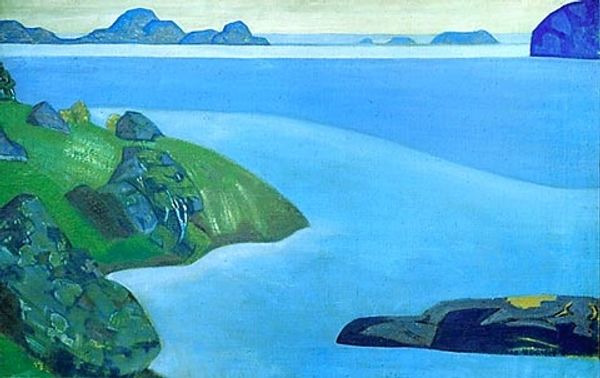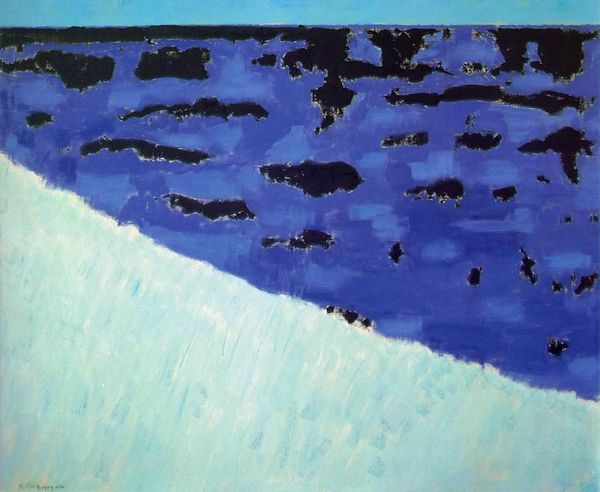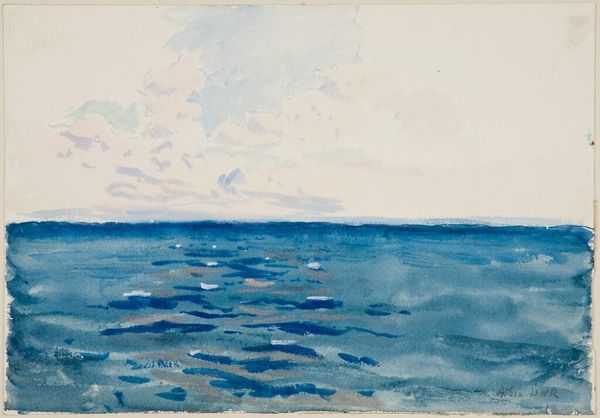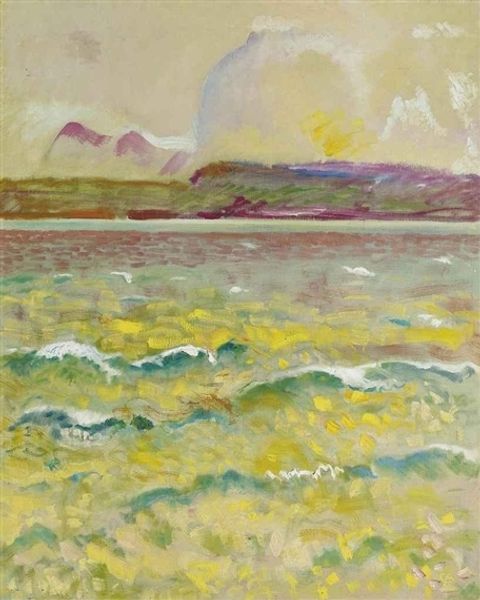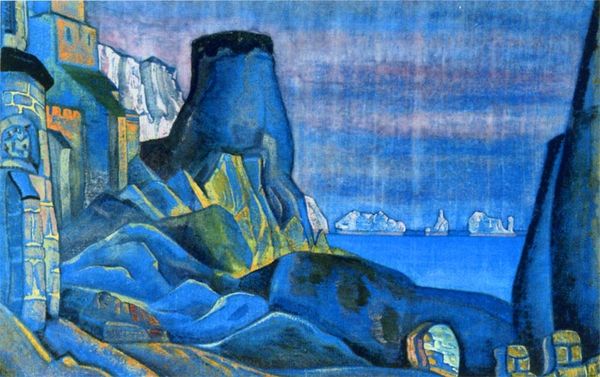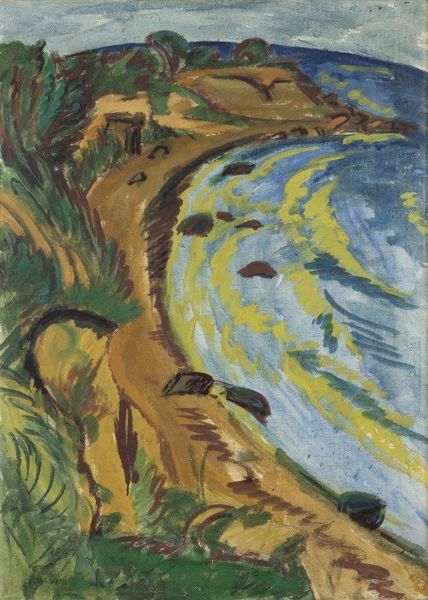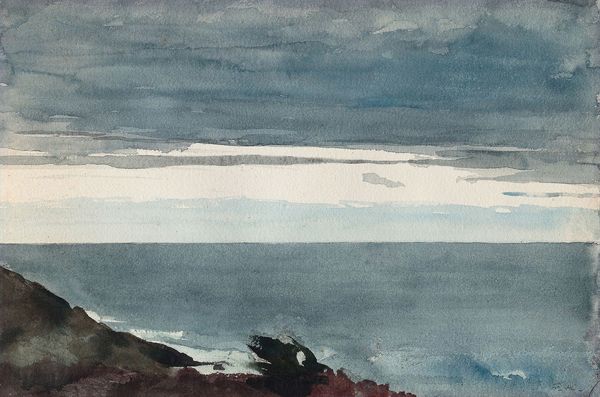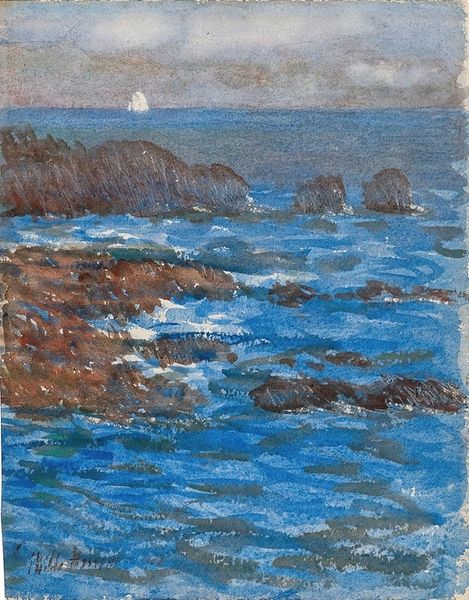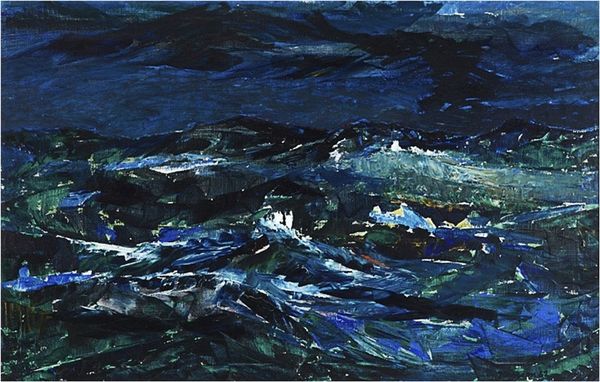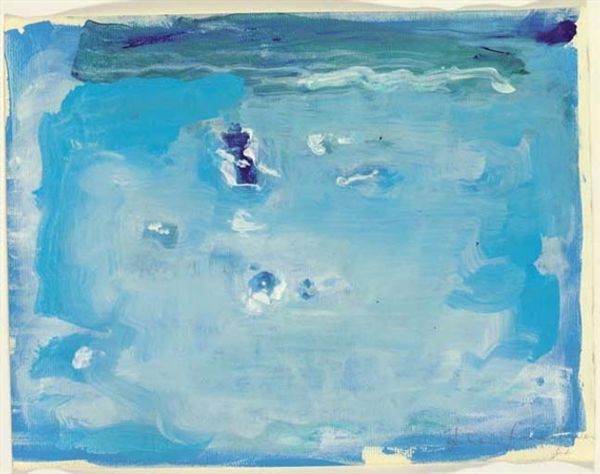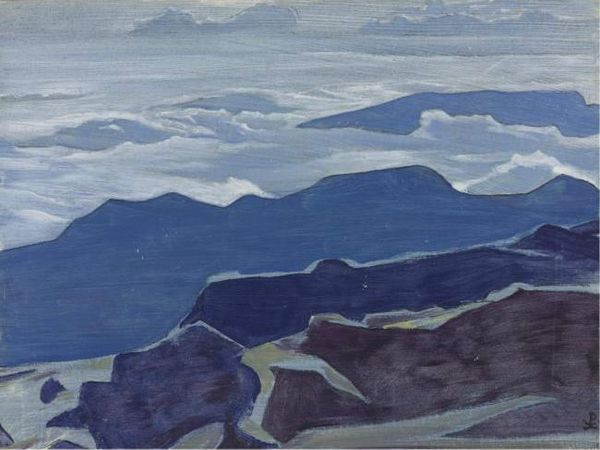
Copyright: Milton Avery,Fair Use
Curator: Standing before us is Milton Avery’s “Blue Bay and Dunes,” a watercolor work created in 1961. What are your initial thoughts? Editor: Well, immediately the overall color and composition feels calming, almost meditative. The broad strokes of blue definitely evoke the vastness and depth of the sea. There is almost an echo effect here between the rocks and the black figures. What do they signify? Curator: That’s perceptive. Avery's use of simple forms aligns with the modernist pursuit of essential truths. The dark shapes disrupt the serenity a little bit and are actually stylized birds; the painting exemplifies the modernist perspective on landscape, filtered through subjective experience and reduced to near abstraction. Avery actively participated in the American art scene, navigating his role among abstract expressionists and other competing groups. Editor: Those stylized birds do seem somewhat ancient. This work feels like a direct link back to earlier symbolic imagery relating to man and nature. Is the simplicity in technique, perhaps, the true cultural legacy? It gives the image a sense of universality, don't you think? As an almost elemental symbol? Curator: In a way, yes. He was deeply engaged in creating art for a growing audience in a world undergoing tremendous cultural and political changes. There's a calculated simplicity. You see his paintings gracing the walls of significant institutions as these were taking steps to appear more publicly engaged. Editor: Interesting! These shapes really become more complex with that additional context, like visual shorthand with loaded emotional significance. You can see that cultural moment encapsulated here, with a fresh vision and cultural acceptance too. It's like visual storytelling! Curator: Precisely. And while it is a simplified scene of water and land it tells a bigger story about modernism in America. Editor: It really shifts your perception of the piece when you understand the deeper context and underlying structure of thought behind it. Curator: Absolutely! It gives us insight not only into Avery’s methods, but the wider history and landscape within which the artist worked.
Comments
No comments
Be the first to comment and join the conversation on the ultimate creative platform.
